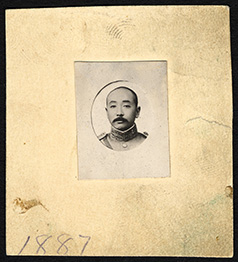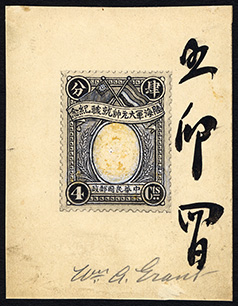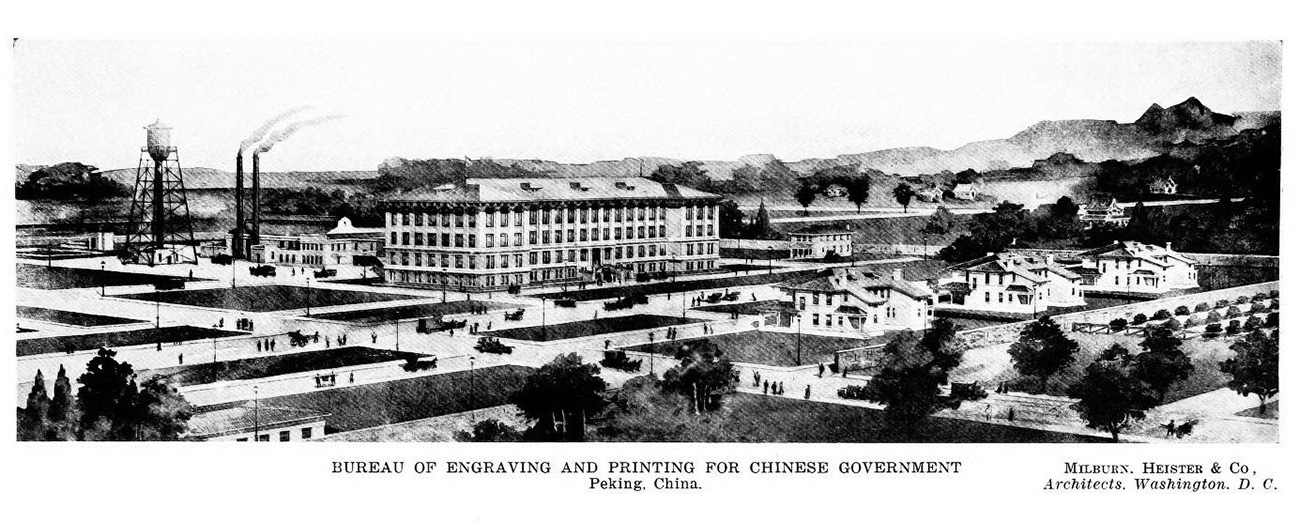
In the early 1900s, the Qing government decided to print its currency and postage stamps in China. Dr. Chen Jintao, the Yale-educated vice president of the Board of Finance, recommended building a security printing plant on the American model, using U.S. Bureau of Engraving and Printing methods to thwart counterfeiters.
Chen hired Washington architects Milburn, Heister & Company to design the eleven-building plant in Beijing. The cost, over $5 million, included shipping expenses for U.S. construction supplies, machinery, and equipment. The Chinese Bureau of Engraving and Printing first printed currency at the complex in 1913 and still does so today.
Specifications for a Bureau of Engraving and Printing for the Chinese Government to be Erected in Peking, China can be read online.
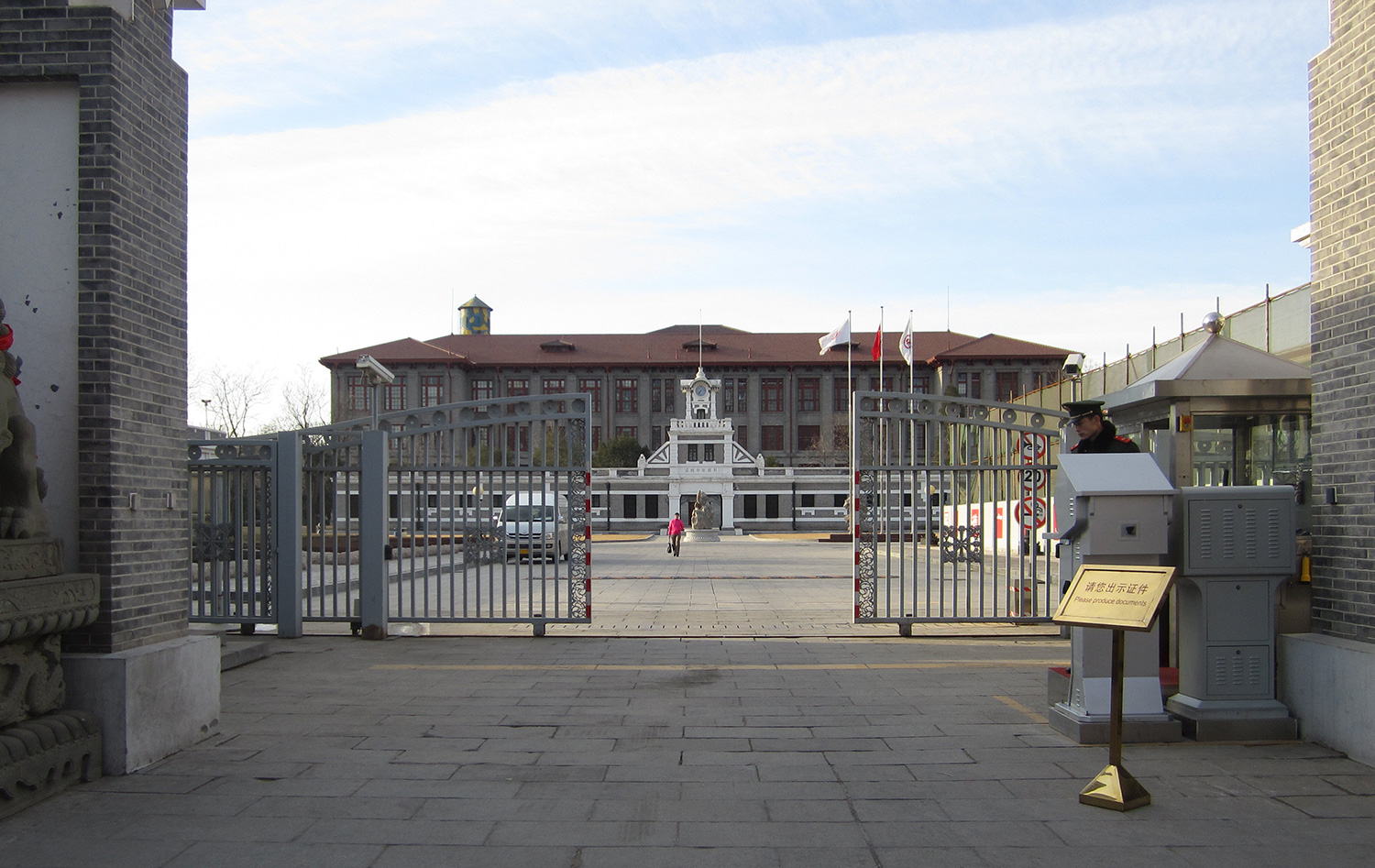
The Qing government also hired two American engravers to establish a Chinese Bureau of Engraving and Printing so that China could produce its own stamps and currency. Lorenzo J. Hatch and William A. Grant moved to Beijing with their families in 1908. Working through plague and revolution, they started the bureau, trained Chinese staff, and designed early Republic of China stamps.
Materials from Grant's personal collection illustrate this Chinese and American exchange of ideas, images, and technology. Highlights include artwork; stamp designs or "essays"; and "die proofs"—proofs of the metal dies on which stamp designs are engraved. His son-in-law donated the collection to the Smithsonian Institution. The National Postal Museum has an online finding guide for the entire collection.

Lorenzo J. Hatch (1856-1914) had worked at the Bureau of Engraving and Printing and the International Bank Note Company. William A. Grant (1868-1954) had been head of the engraving room at American Bank Note Company. They traveled to China with siderographer Evan S. Stokes, engraver John J. Gilfoil, and lathe expert W.E. Dickinson. According to philatelist and piano maker Theodore Steinway in a letter dated December 3, 1945, to the Grant family, there are about 250 stamps of China from the Grant and Hatch designs, including all of the overprints (George W. Brett Papers and Documents at the National Postal Museum).
The Lorenzo James Hatch and Hatch family papers, 1902-1937 are available for viewing on the Archives of American Art, Smithsonian Institution website.
On November 22, 1911, Lorenzo J. Hatch wrote, "We are witnessing one of the most remarkable events in the history of the world—almost a bloodless revolution of three hundred million people.”
Working in China, Hatch and Grant designed, engraved, and supervised production of currency and revenue and postage stamps for the Qing and Republic governments. Hatch died in China in 1914; Grant returned home in 1928. Here, Hatch and his wife Grace are seated at left; at right, from the back forward, are Grace's sister Effie and the Hatches' son Harrizson, the Grants’ daughter Delnoce, and Grant and his wife.
William A. Grant took photographs during his tenure in China and a couple of these provided source information for stamp designs. The Grant Stereoscopic Slides of China, 1908-1915, are at the University of New Hampshire Library with an online finding guide.
Map of China unissued small die proofs on card, China, 1912
Officials rejected the first Republic of China stamp design for several reasons, including map and text errors. The printed stamps were burned, but a few were salvaged from the fire.
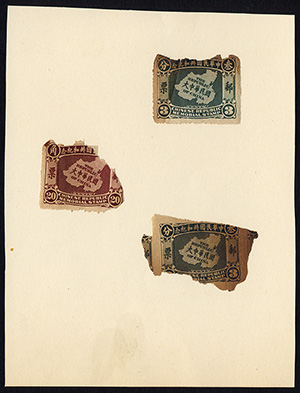
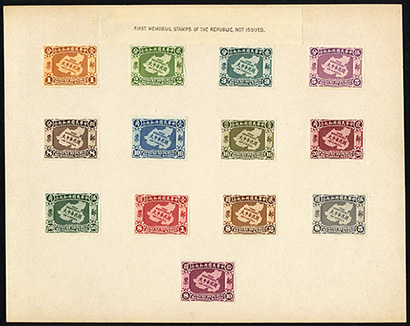

The first locally produced Chinese stamps featured Sun Yat-sen, the republic's founding father, and Yuan Shikai, its first president. Hatch wrote that the "postal department seems delighted.” In 1915, Yuan tried to overthrow the republic in favor of a monarchy. He failed before new "monarchy" stamps could be issued.


Courtesy University of New Hampshire Library
Special Collections
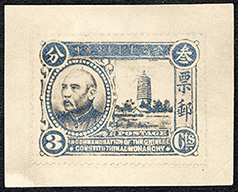

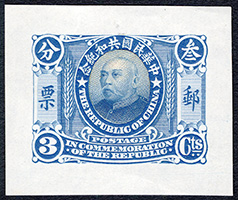
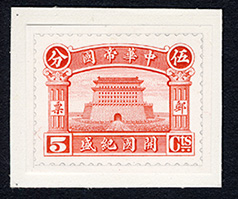
Following Yuan’s failed attempt at a constitutional monarchy—with himself as emperor—Chinese postal officials canceled the commemorative issue of these planned stamps, shown here as essays with hand-drawn perforations.
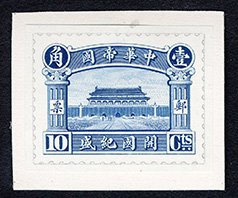

This set of three stamp designs by Hatch and Grant had three printings, the first of which was re-engraved in London. Grant copied the London engraving for the first Beijing (Peking) printing. The second Beijing printing used the original dies. Philatelists study the engraving details to identify the different printings.

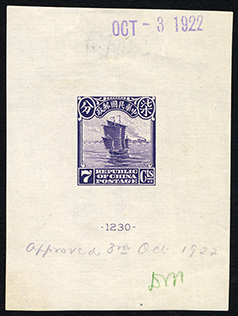
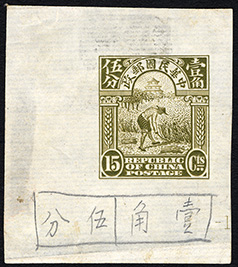
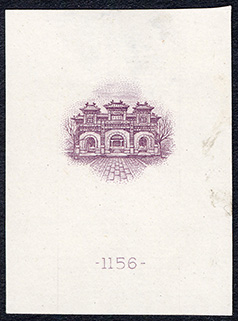
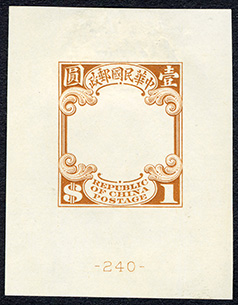

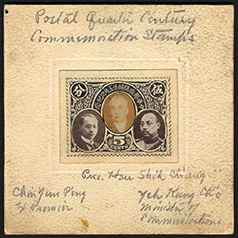
The Chinese national postal system traces its beginning to a Qing dynasty decree in 1896. These 25th anniversary commemorative issues from 1921 show how stamps still used Western numerals and letters. The final design includes (left to right) Premier Jin Yunpeng, President Xu Shichang, and Yeh Kung-cho, minister of communications.
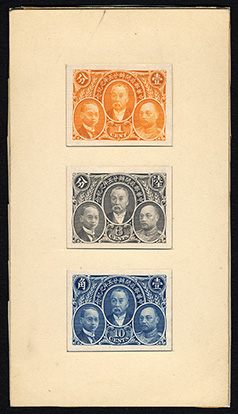

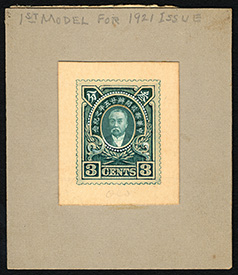
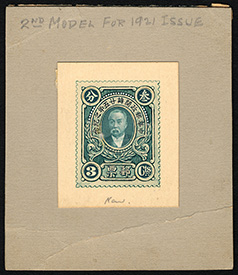
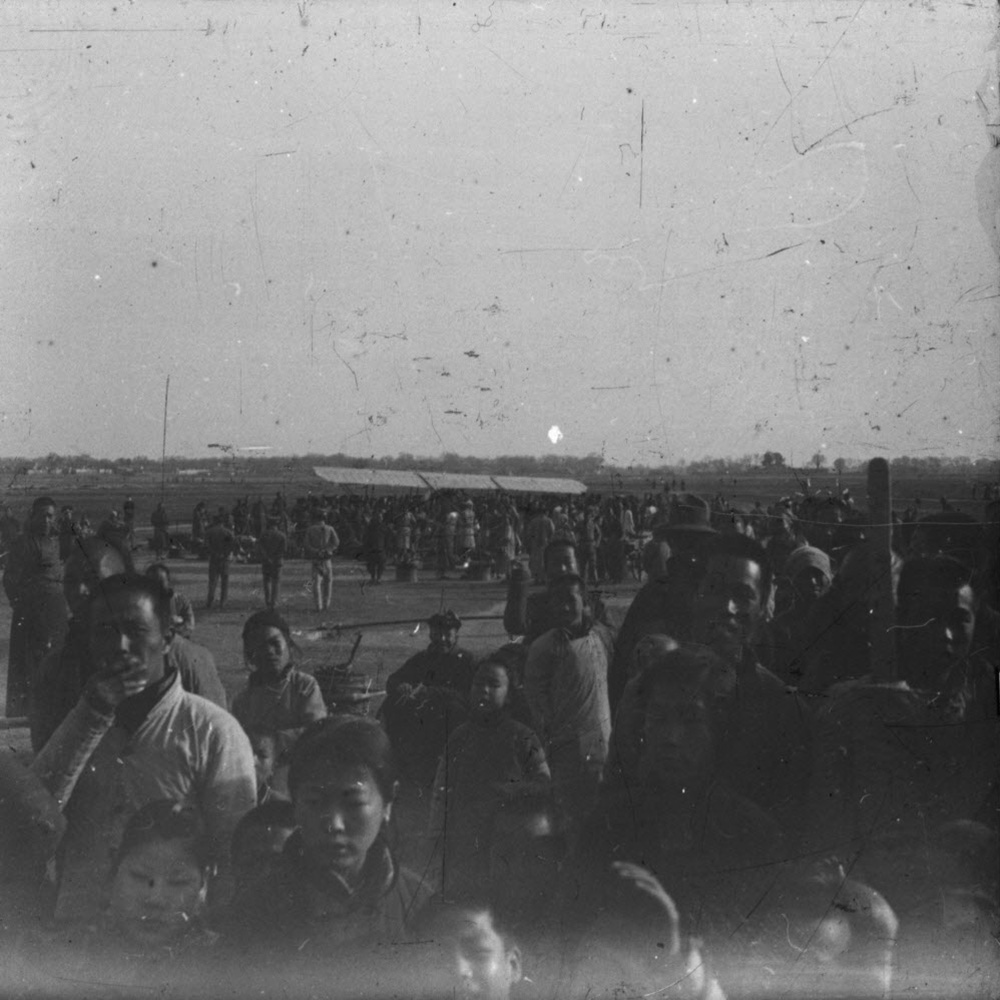
Courtesy University of New Hampshire Library Special Collections
William Grant photographed the first airplane in Beijing in 1914. Grant took many stereoscopic slides during his time in China and used some of them as sources for engraving images.
Grant designed and engraved this image of the American-made Curtiss Jenny over the Great Wall of China for China's first airmail stamps, symbolizing progress as well as Chinese-American collaboration. Note the moving propeller and, in the 1929 issue, the change in the flag design on the airplane's tail.
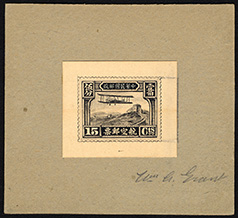


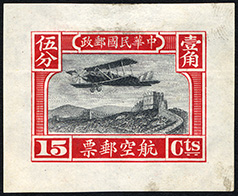

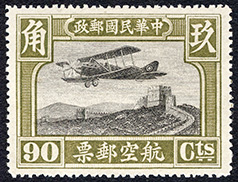

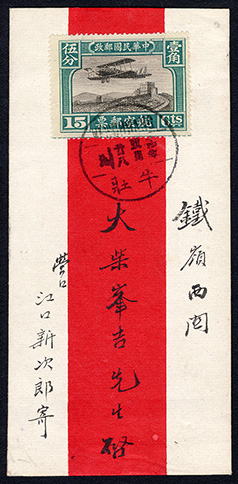
On October 10, 1923—a week before the issue of this stamp—the Republic of China formally adopted its national constitution at the Temple of Heaven in Beijing. In the stamp design, crossed Republic of China flags guard the entrance.


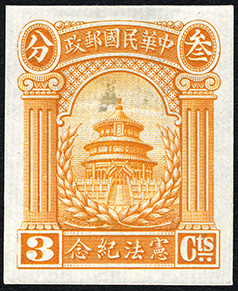
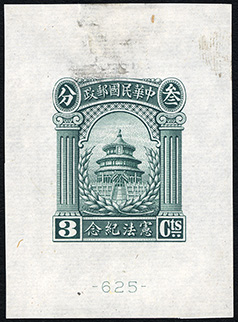
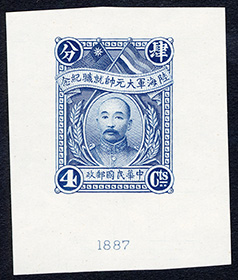
During the Warlord Era, from 1916 to 1928, regional strongmen controlled parts of China. Zhang Zuolin, a warlord from Manchuria, expanded his territory into northern China, gaining control of Beijing in 1926. When he died in 1928 after a bomb blew up his train, these stamps were withdrawn.
